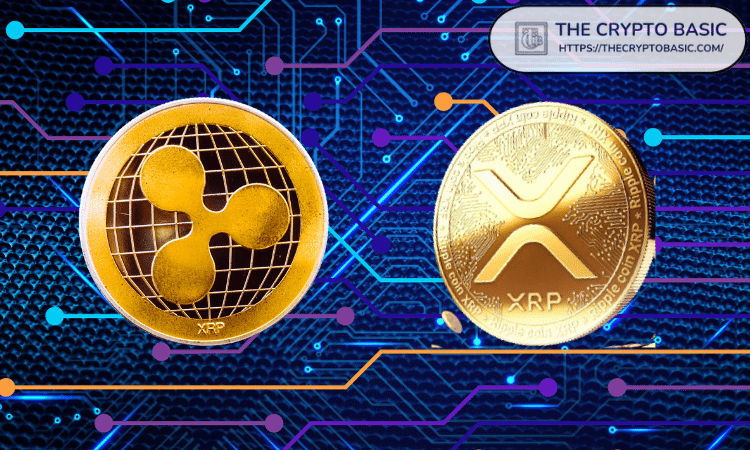Crypto pundit Nietzbux recently explored the XRP price underperformance from two hypothetical scenarios relating to Ripple business operation.
In a detailed post on X, Nietzbux commented on the prevailing negative sentiment about XRP amid its underperformance in a bull market. He agreed that XRP’s current trajectory in this bullish cycle is disappointing. However, he highlighted potential positive and negative scenarios to provide insights into the state of the market.
Notably, Nietzbux speculated from the angle of Ripple’s business activities related to XRP. He argued that Ripple’s routine XRP sales constitute most of its business revenue. Additionally, he claimed that the utility Ripple has established for XRP plays a role in maintaining its price range between $0.50 and $0.60 during this bullish cycle.
Some thoughts on the low sentiment in XRP.
I understand the low sentiment. I am personally less than thrilled with where we are at. But logically, there are a couple of options to consider. One is the negative route and the other the positive.
What do we know? We know that…
— nietzbux (@nietzbux) March 28, 2024
Negative Scenario: Ripple Exists Only to Dump XRP
Taking these assertions into account, Nietzbux proposed a theoretical scenario in which Ripple’s sole purpose is to sell the XRP tokens from its escrow. In this scenario, he argued that XRP would have no substantial utility, no significant impact on the financial landscape, and no bank adoption.
Meanwhile, the commentator reflected on the potential entities to whom Ripple sells XRP. He highlighted possibilities such as institutions, venture capitalists, financial service firms, and potentially banks.
He envisioned that these buyers merely secure juicy deals on XRP from Ripple and promptly sell it off for quick profits. In this portrayal, Nietzbux characterized Ripple as essentially a mechanism for selling XRP.
– Advertisement –
However, the commentator posed a critical question: “But does this make sense?” Nietzbux suggested it could only make sense for crypto critics who see the entire industry as corrupt. Explaining further, he attempted to compare Ripple with the collapsed FTX empire.
Likening Ripple to FTX
Nietzbux highlighted that FTX was run by a cohort of 10 young individuals, noting its fraudulent business could have been easily detected with minimal effort. Contrasting this, he emphasized that Ripple stands apart due to its extensive global presence, boasting 15 offices and a larger workforce compared to FTX.
Furthermore, Nietzbux highlighted Ripple’s ongoing recruitment efforts and the establishment of new positions and divisions within the company. Moreover, he stressed that Ripple survived a nearly three-year investigation without facing criminal charges beyond failing to register some sales with the SEC.
In contrast, FTX crumbled under the weight of initial rumors regarding its fraudulent activities, which ultimately proved true.
Essentially, Nietzbux sought to establish through this negative scenario that Ripple would make no efforts to expand and hire new employees, knowing it would not succeed at XRP adoption and utility.
For those who believe these actions could be a ploy to continue attracting investors to buy into a “dead coin,” Nietzbux acknowledges the plausibility. However, he countered this by highlighting that Ripple’s XRP buyers are institutions capable of conducting thorough due diligence with access to non-public documents.
He stressed that these institutions would not deal with Ripple if it were merely an XRP-selling machine. Nietzbux left readers to contemplate the question: “If your goal is to empty the escrow and walk away, is that really the best way to do it?”
The Positive Scenario: Ripple Has Something to Hide
In exploring the positive scenario, Nietzbux considered Ripple’s actions beyond simply selling XRP. He emphasized Ripple’s extensive presence within major international organizations such as the IMF.
Nietzbux speculated that the company’s partners would play integral roles in any new financial system, whether SWIFT or other large next-generation platforms for settlement and foreign exchange. He emphasized that Ripple’s software would likely be incorporated into these systems in some capacity.
In this optimistic scenario, Nietzbux envisioned a situation where XRP’s utility would stem from integration with these forthcoming platforms. As a result, he suggested that selling XRP emerged as a viable strategy among the options Ripple could pursue to fund expansion and facilitate growth.
According to him, the rationale behind this expansion would be Ripple’s anticipation of continued growth.
What It All Means
In essence, Nietzbux underscored the challenge of interpreting the actions of a company like Ripple. He highlighted the disillusionment experienced by many long-term XRP holders who have lost faith in both XRP and Ripple for justifiable reasons.
Nietzbux pointed out the anomaly of XRP’s performance compared to other cryptocurrencies that have achieved significant growth without positioning themselves as banking solutions.
Emphatically, Nietzbux observed that the retail market appears to have lost interest in XRP, and widespread adoption has yet to materialize for crypto. He concluded that the key lies in what Ripple knows but chooses not to disclose to the public.
Nietzbux submitted:
“Do they know they are going to fail at their adoption goals and are simply keeping up appearances while dumping on retail? Or do they know adoption is coming and simply can’t say, hence, their continued hiring and expansion? Time will tell.”
Disclaimer: This content is informational and should not be considered financial advice. The views expressed in this article may include the author’s personal opinions and do not reflect The Crypto Basic’s opinion. Readers are encouraged to do thorough research before making any investment decisions. The Crypto Basic is not responsible for any financial losses.
-Advertisement-
This article was originally published by a thecryptobasic.com . Read the Original article here. .

